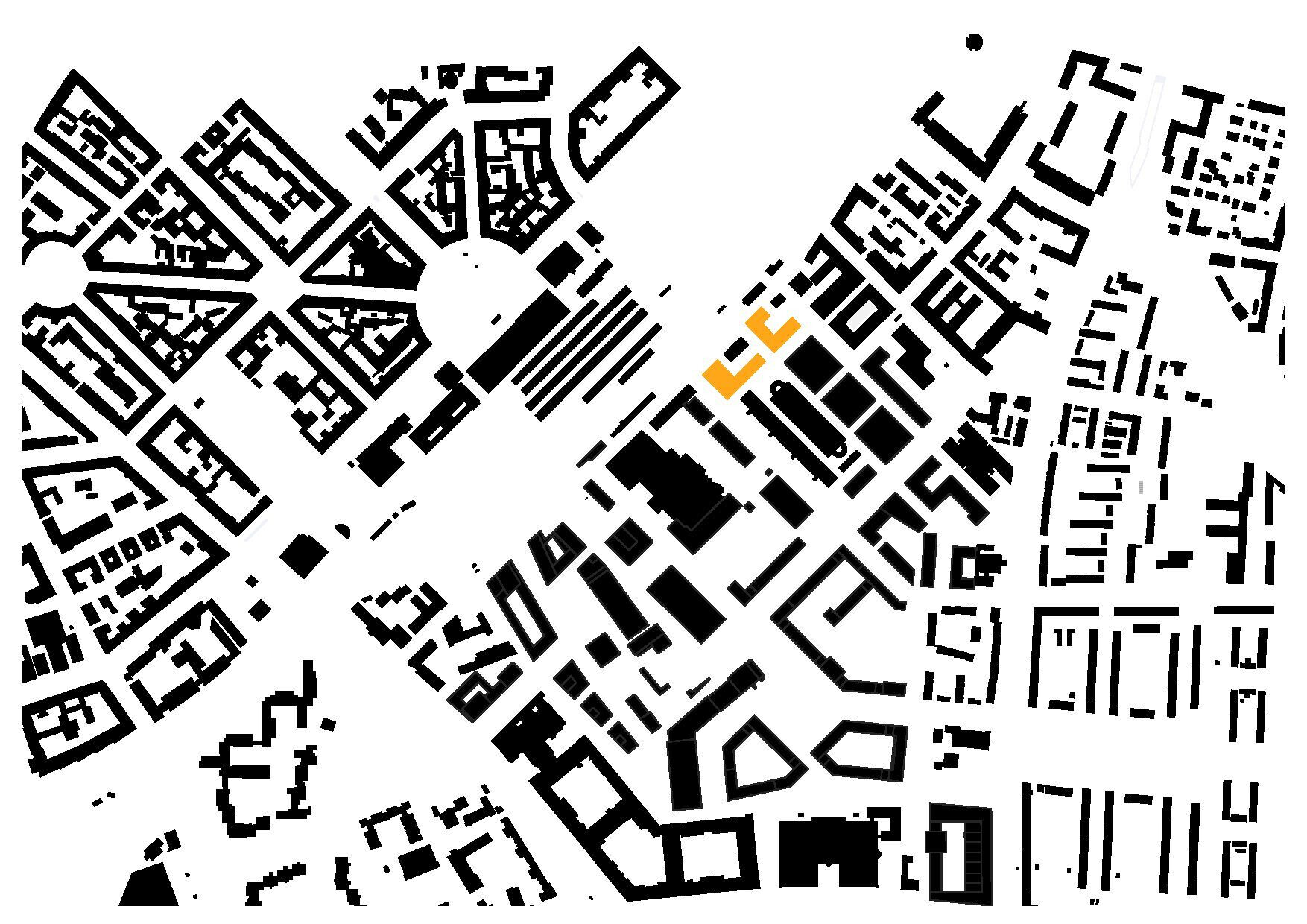In the new Werksviertel located in the east of Munich, where mashed potatoes, motorcycles and men’s suits were once manufactured and party people were out and about in Kunstpark Ost and Kultfabrik, a new urban neighborhood providing a high level of social diversity is currently under construction. Prominently situated with a view opening towards the Ostbahnhof station, the striking iCampus Rhenania complex of office buildings invites passersby into the neighborhood.


The two new buildings feature a black façade and loft-like windows reminiscent of the industrial heritage of the location. They are grouped around a listed villa – the former administrative building of the Rhenania freight forwarding and relocation company dating back to the 1920s. In keeping with the community approach, the design of the campus plaza located in the center of the ensemble resembles an “urban village.” Outdoor seating areas in front of various restaurants and cafés, long wooden benches under trees and green roof terraces create a place where people enjoy working and spending their spare time.
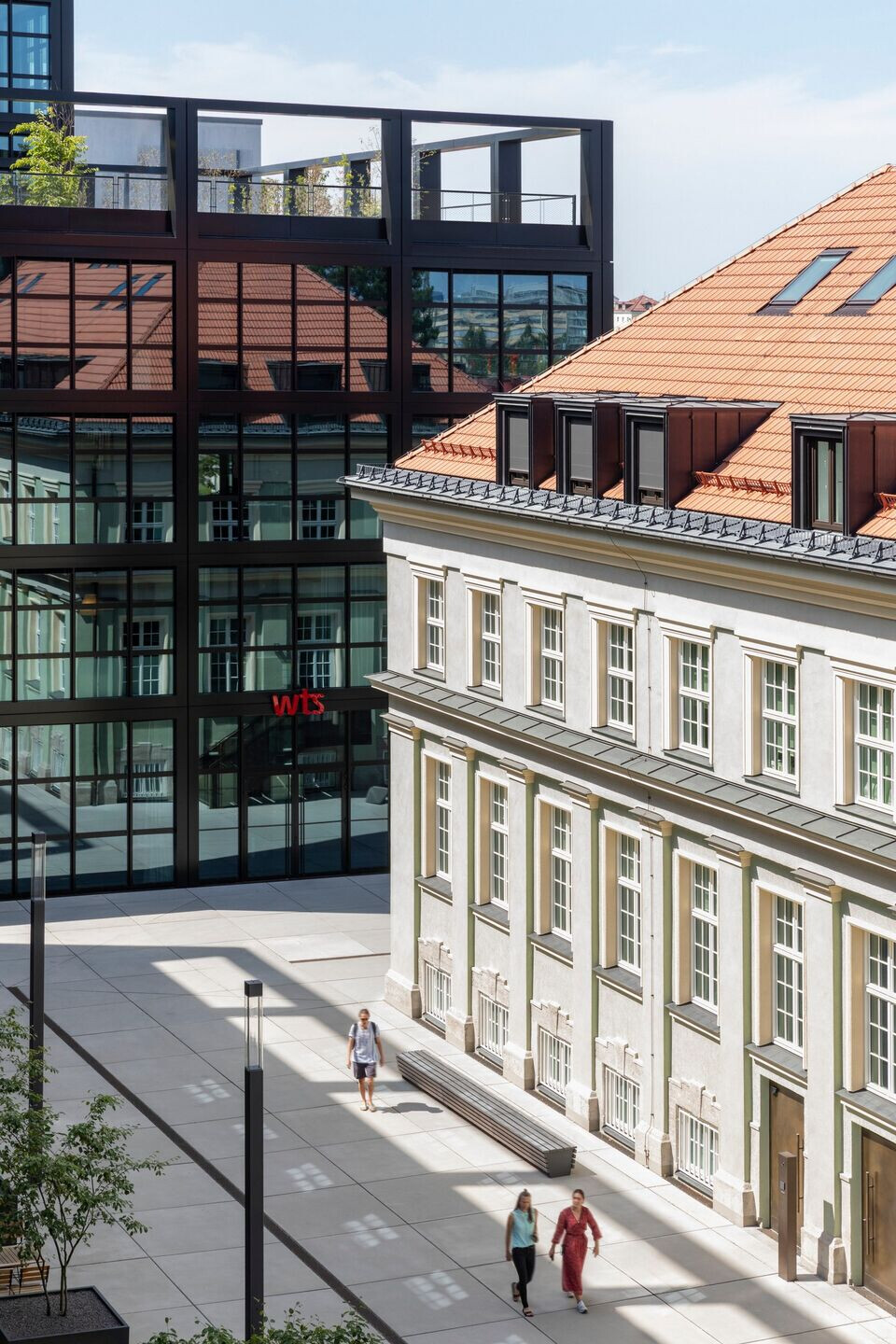

In the era of agile teams and working from home, the building complex provides maximum flexibility: The structure and location of the development cores makes it possible to alter the layout of the floors by placing modules individually or linking them together. Thanks to this versatility, iCampus Rhenania can accommodate businesses of varying sizes and with different requirements in respect of their office layout. A striking example of environmental sustainability and innovative engineering are the component-activated ceiling elements supplied by Innogration, which effectively provide the rooms with district heating and cooling.


The complex blends harmoniously into its urban context. The small-scale development along Friedenstrasse replicates the scale of the seemingly contradictory neoclassical villa, creating a natural transition to the other iCampus buildings and the entire surrounding Werksviertel neighborhood. Open rooftop pergolas strike a balance between the flat terrain towards the station and the four- to six-story office buildings gradually ascending towards the campus center. The building on Friedenstrasse is set back slightly to create an open villa view and inviting routes into the interior.
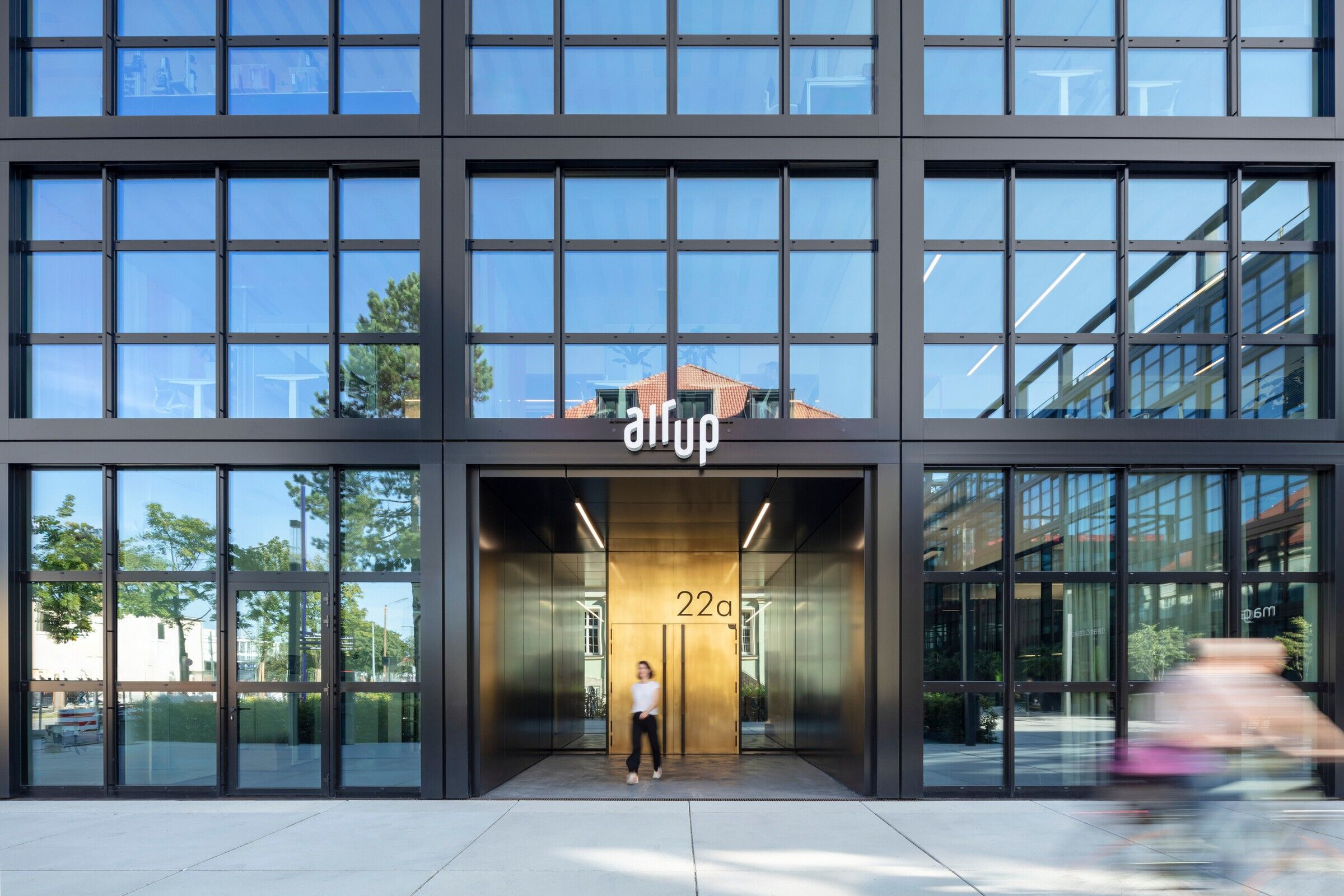

The black color of the façade was developed specifically for this project in a Swiss laboratory. The yellow and golden iron mica it contains lends warmth, friendliness and, depending on the sunlight, a shimmering depth to the buildings. Four main entrances with lobbies facing the campus plaza connect to the interiors, where the rough, untreated concrete of the walls and stairwells contrasts with the warm brass of the mailboxes, which is also visible on doors, elevators and kitchenettes.
The exciting ensemble of old and new employs the design idea of an “urban village” to transform the area into an innovative place of new working and living in the eastern part of Munich.

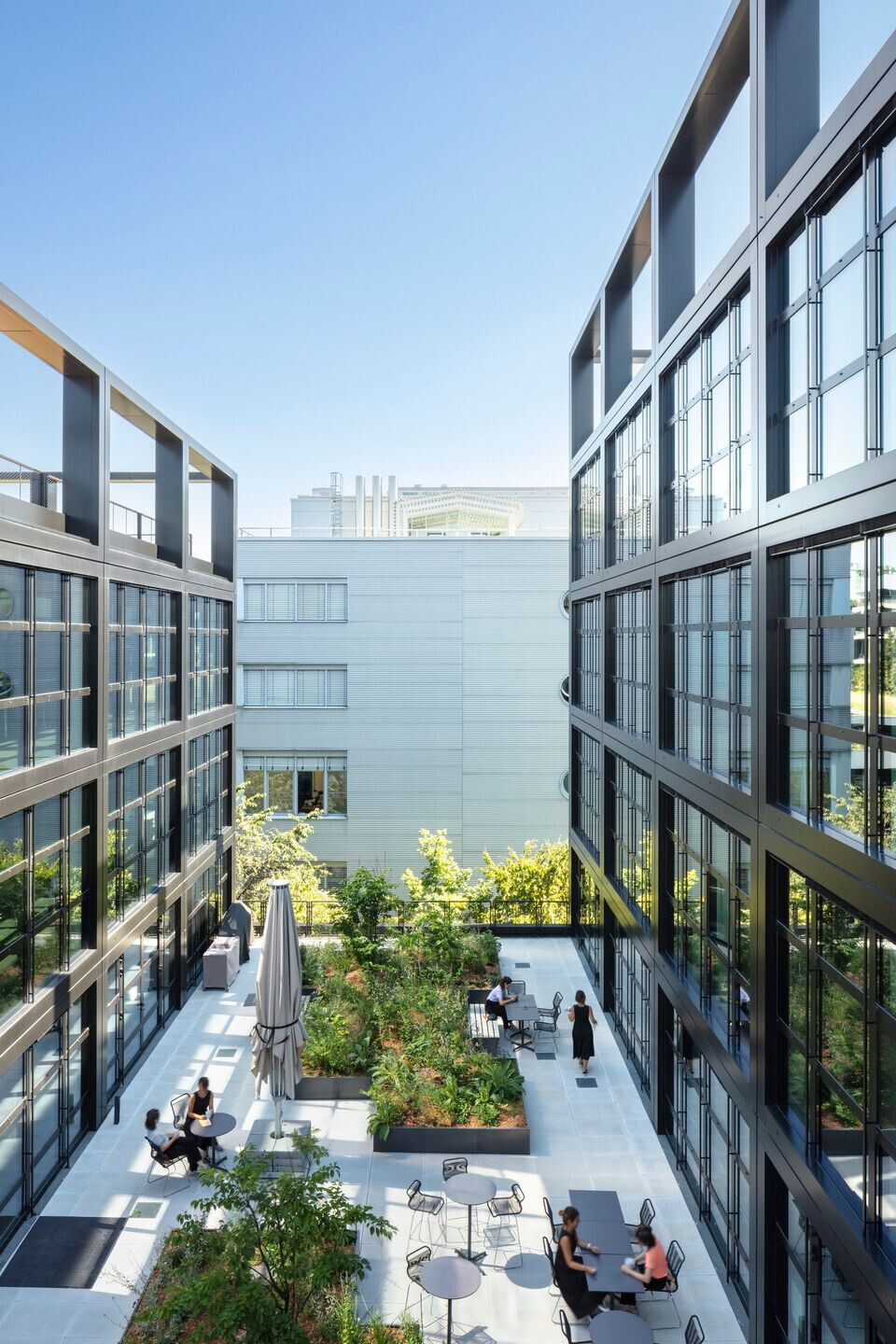
Team:
Client: R&S Immobilienmanagement GmbH
Project controlling: Schwab.engineers
Architecture: HENN
Project team
Partner in charge: Christian Bechtle
Project directors: Christoph Omlin, Ebra Muminovic, Paulina Biernat, Selin Demir, Tanja Dietsch, Martin Erdinger, Marta Gałdyś, Elke Gebhard, Ralph Hempel, Carlotta Hirsch, Attila Horvath, Nelli Maier, Wolfgang Mühlhölzl-Hirschmann, Malin Näsström, Daniel Recklingloh, Lina Safarini, Mira Schröpfer, Andreas Schöler, Chiara Schüler, Birant Sencan, Ine Spaar, Kathrin Stamm, Peter Weber, Fredrik Werner, Ji Wu, Wanli Xuan
Consultants
Structural framework: Ametsbichler + Lehr
High-level guidance systems: Büro Uebele
Construction management: Drees & Sommer
Circulation systems design: gevas humberg & partner
Building services: IBF Ingenieure
Façade design: iPb Ingenieurbüro Planung Blei
Building physics: PMI
Landscaping: VOGT/BL9
Construction companies:
Innogration: CEILTEC® (Innogration ceiling system)
Monopol AG (façade paint)
Nordic Copper: Nordic Brass Weathered | Hairline 1120 (mailboxes, entrance doors, elevator portals and cars, back walls of kitchenettes and washbasins)

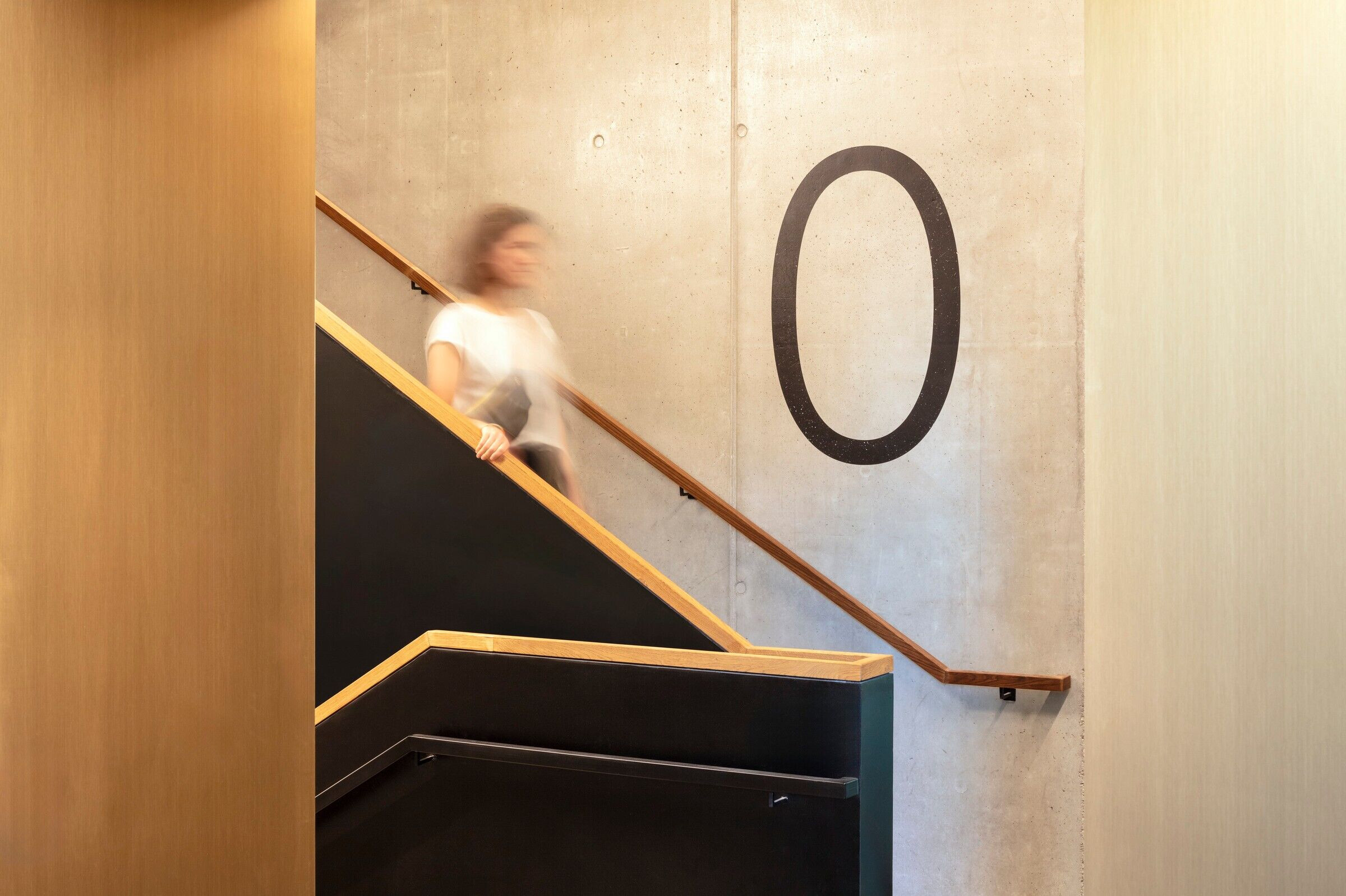
Material Used:
1. Carpentry: BAVEST
2. Carpentry: BES Brunold Holz und Design Manufaktur
3. Steel doors/gates: BKM Brandschutzkonstruktionen Mihla
4. Advertising and display system: digital media Großbildtechnik
5. Heating, cooling, air conditioning: Engie
6. Metalworking: Feuchtgruber
7. Electrical: Klaus Schöffmann
8. Elevators: KONE
9. General contractor for interior fit-out and finish: Lindner SE
10. Guidance and signage: OPTIMAXX Werbetechnik
11. Façade: PICHLER Projects
12. Shell construction: Riedel Bau
13. Roof: Tectus Flachdachabdichtungen
14. Elevator portals and cars: Wölfel

